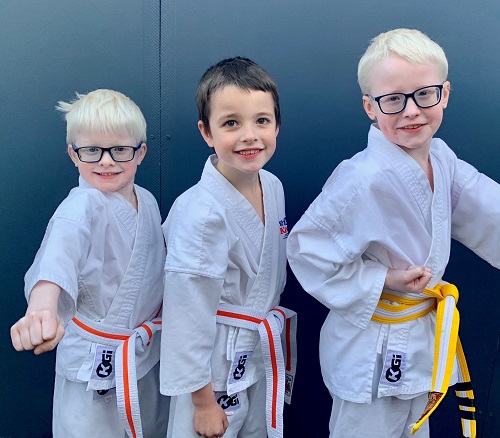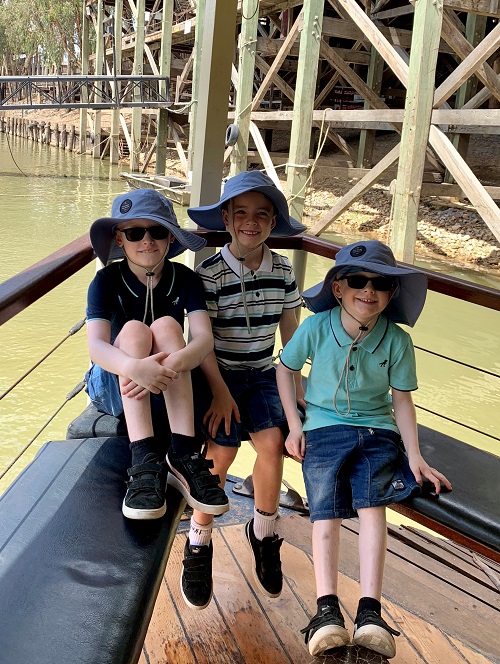Rebecca is a mother of three boys. Two of those Ethan and Samuel were born with Albinism. Read Rebecca's account of being a parent of children with albinism as part of of International Albinism Awareness Day (IAAD).
Ethan was diagnosed with oculocutaneous albinism in 2011 when he was 10 weeks old. The opthalmologist took one look at Ethan with his white hair and within minutes checked his eyes and confirmed the diagnosis of albinism. The lack of pigment in his hair, skin and eyes as well as his nystagmus were some of the clear signs of albinism.
We were told Ethan is legally blind, along with this information we were given the advice to always cover Ethan’s skin with sunscreen and protective clothing and for him to wear a hat and sunglasses when outdoors.
Our first concerns were in regards to Ethan’s vision and the impact this would have on his life. What would this mean for school, friends, sports, work, and life in general?
Just before Ethan turned two we were blessed with twin boys. Samuel was born with albinism, while Christian was not.
Finding support
Within a week of Ethan’s diagnosis we had our visit from Vision Australia for early intervention. This support continued after Samuel’s birth, with the boys receiving a mix of therapies to support their development.
We also discovered the Albinism Fellowship of Australia (AFA), a wonderful support network of Australians with Albinism and parents of children with albinism. We’ve met so many different people through the AFA and have seen for ourselves that people with Albinism live very successful lives.
Ethan and Samuel continue to surprise everyone in so many ways. They’re both active and love to ride their bikes, go for scooter rides or bush walks with their brother. They also participate in Karate at our local Dojo and have made some great friends.
It can be difficult for them to explain how they can ride their bike by themselves, but need to be guided or use a white cane in other instances. This is dependent on their level of fatigue or the level of glare.

Caption: Samuel, Christian and Ethan all enjoy karate.
Life at school and home
Our boys are very well supported at school with additional help, as well as the range of assistive technology available to them.
Hand-held or large desk-top magnifiers, screens that can connect to the whiteboard, iPads with accessible apps and laptops set up for their vision needs, all support Ethan and Samuel to access their schoolwork just about on par with their sighted peers.
There is a larger range of sunscreen to choose from than ever before and knowing the difference between each is important. We live close to the beach and while we time our visits when the UV is less, we also ensure the boys wear long sleeved rash tops, long swim pants, along with a legionaries swim hat.
We’re grateful our boys have been born in the current generation, where differences in people are more widely accepted, at school and in the community.

Caption: The three Bradley boys, Ethan Christian and Samuel.
Life as a parent of children with albinism
While our boys may be asked or teased about their condition at some points in their lives, I believe they will have the resilience to manage these situations.
As a parent there is always an element of nervousness for what the future will hold, but our boys are very fortunate to have the opportunities they do in this generation and in Australia.
If there is one piece of advice I would give to any parent of a child that has been diagnosed with albinism, it would be to network. Personally, for you and your children to meet other children and adults with albinism and also professionally, to ensure your child is accessing therapies and services to assist them in their future success.
In line with the IAAD theme this year of "Made to Shine" our favourite quote in our house is “why fit in when you were born to stand out?"
You can find out more about Albinism online or contact Vision Australia on 1300 84 74 66 or email [email protected] to find out about available support services.










